#Preparing for Google's AI update
Explore tagged Tumblr posts
Text
Unlock the full potential of your online presence with "Inclusive SEO Best Practices: Ensuring Web Accessibility for People with Disabilities." Learn how to create a digital space that welcomes everyone by implementing accessibility measures. This comprehensive guide covers strategies to enhance your website's usability, cater to diverse user needs, and boost overall inclusivity. Elevate your SEO game while making a positive impact on users of all abilities.
#SEO updates 2024#Google Search Generative Experience#Impact of AI on SEO#SEO trends in 2024#Preparing for Google's AI update#Core Web Vitals#Lighthouse audit#Page speed optimization#Improving website performance#AI content writing#ChatGPT for SEO
0 notes
Text
PSA: Tumblr/Wordpress is preparing to start selling our user data to Midjourney and OpenAI.
you have to MANUALLY opt out of it as well.

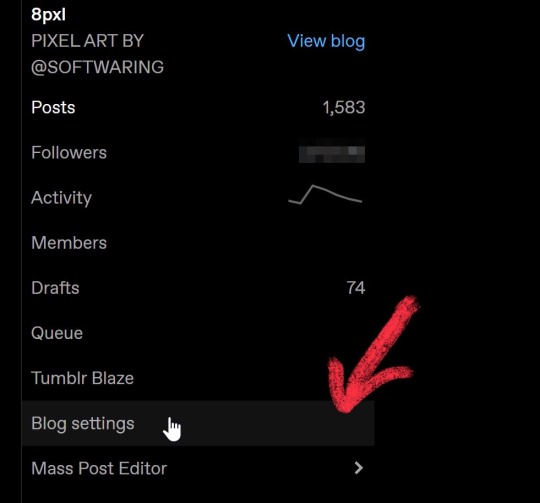


to opt out on desktop, click your blog ➡️ blog settings ➡️ scroll til you see visibility options and it’ll be the last option to toggle.
to opt out on mobile, click your blog ➡️ scroll then click visibility ➡️ toggle opt out option.
if you’ve already opted out of showing up in google searches, it’s preselected for you. if you don’t have the option available, update your app or close your browser/refresh a few times. important to note you also have to opt out for each blog you own separately, so if you’d like to prevent AI scraping your blog i’d really recommend taking the time to opt out. (source)
#ai#tumblr ai#midjourney#openai#protect your creative efforts and don’t let them profit off your work!!#fuck tumblr they specifically said months ago they’d NEVER sell user data yet here we are#AND after the ceo has been harassing trans users like wtf is this fucking site becoming#tumblr news#tumblr#tumblr update#anti ai#support human artists
34K notes
·
View notes
Text
Gemini Takes Flight at Google I/O: Unveiling New Features and the Future of AI
Google I/O 2024 was an event bursting with innovation, and as a user, you might be wondering how these advancements will impact your daily interactions with technology. Let’s delve into the highlights and see how they translate into real-world benefits for you. Gemini 1.5 Pro and Flash: Tailored to Your Needs At the heart of the excitement were the latest additions to the Gemini family: Gemini…

View On WordPress
#ai assistant integration with android apps#AIAssistants#AIInnovation#Artificial Intelligence#benefits of gemini 1.5 pro for businesses#FutureTech#Gemini Update#GeminiUpdates#Google AI#Google I/O#GoogleAppsIntegration#GoogleIO2024#how to prepare for the future of ai with gemini#how will gemini update affect seo#Machine Learning#Natural Language Processing#PersonalizedAssistance#Project Astra#ProjectAstra#TechRevolution#UserExperience#what is project astra google#will gemini replace google search
0 notes
Text
Update: this post is at 69 notes!
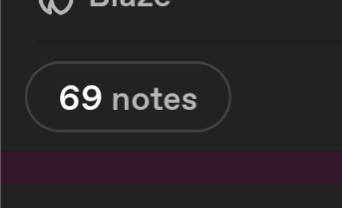
Another update: what.

good morning, good afternoon, good evening, and goodnight!
Also nothing about this post is organized but I would like to add that yes I do take drawing requests and they are very very encouraged, and there's a 50/50 chance the drawing will be shit :3
And I have a huge tag list so ask me if you want to be on it or if you want to be taken off it
Pronouns are anything other than she/her, preferably they/them
Wattpad is @asri3l_dreemurr, @spamton-detector is my gimmick blog, @thermodynamics-lawyer-esq was abandoned 💔,
aalso @redleavesandteardrops WAs my WoF side blog but fuck you
and @sonder-wof is my fan-made WoF continent blog thing
dni if you're a bitch I guess, don't want a long ass list of terms I don't like lmao
Btw I'm a lynx, reindeer, and crow/magpie (idfk I'm trying to figure out) therian wahoo !! And also some kind of owl but I'm not sure and I'm really confused help
Important links I think people should see: (actually mostly stuff I just want to go back to later)
Alright, usually, I put the most recent links at the bottom, but I need y'all to reblog this now.
This might be already on here but, if you find someone that tried to commit suicide via pills:
Internet safety and how to identify pdf files/pedophiles
Important sites for while Trump is president
How to be prepared for Trump's presidency
Like the above link
Something to remember about Project 2025
What to do if you suddenly find yourself homeless
^ written by someone who has been homeless
Text... Font... Thing...
Writing resourcesssss
TIME TRAVEL, BITCH
Books Trump might ban, I think
Depression tips
Words instead of "said"
When your character...
Rizz
Some links for a bad day
Suicide hotline that isn't call (was told this isn't working at the moment)
Goodbye medical debt!!
Tree noise<3
Petition to ban perfume in schools
How to bypass YouTube's anti ad blocker thingy
I didn't have the attention span to. Fully read this so I am so so sorry I can't summarize this properly but I'm fairly sure that it is important and worth reading if you're, unlike me, capable of reading this
Thank You Mister Deli Woman
Kewl resources for artists
In the US? Wanna learn new and terrible things about where you live?
Cold shock response
????WHAT THE FUCK ???????
BOYCOTT COCA COLA PRODUCTS AND NESTLE PRODUCTS!
Classic meme templates
THIS ANIMATIC MADE ME CRY
Self care assessment thingy
free movies
How to draw arms and legs
Lineart turorial
Becoming an adult cheat sheet
taxes
How to fight back against ICE agents
Something something food recalls. I'm stupid and don't know what this means but I've heard it talked about seriously
WoF headcanons I wanna go back to
Fuck Google
Sound
Wobble worble
"Jesus in a hot topic"
Call the police on their pedophile ass
“I have all these OCs! But no story…”
Fuck ice, know your rights
Web games
Fuck paywalls
Survive the next 4 years
Might have another similar thing here but how to identify AI (writing, voices, videos, "art")
Literally everything you need to make a character
Holidays :)
Buy stuff from native people!!
Wholesome thing I wanna save so I can go back to it
AO3 summaries: help
Site to totally avoid
Speaking from ignorance
Top surgery tips!
Consent
Project Gutenburg
Finding your lost pets/your lost non-human family
First aid for seizures
Dragons and unicorns.
Food or drugs that have been recalled
What to do if...
STATISTICS
Substitutes for AI!
The whole untitled wolf sheep comic thing
Kris. K-kris. I don't smoke weed. I DONT SMOKE WEED! I DONT SMOKE WEED! I DONT SMOKE WEED !!! KRIS !!!!!!!
tips
VERY important tips
Deltarune animation I very much love, chapter 3 spoilers beware
Yet another deltarune animation I love, again, ch3 spoilers
Tenna gifs (thank you ezgif I love you ezgif)
Education is a right, not a service
2dollarbeer
TENNA MOUSE??
Fun behaviors to give dragons
Mpreg.
Stop nonconsensual intimate image abuse
Essay about Ralsei i like a lot
Deltarune divorce chart?
Dads and lesbians and lumberjacks
How to make a cookie in a mug
Weird dreams I had
Sans is from deltarune (ch3 + ch4 spoilers)
THIS SPECIFIC PIECE OF FANART I LOVE IT SO MANY............
"how to be a sub and not kill yourself in the process" I think. This is here so people don't do that. dont die by being stupid please
Evacuation prep
Not even a Tumblr post but a funnee thing I saw on YouTube
A bunch of stuff
This post it makes me wanna cryyy
Disability-friendly recipes!
Ralsei roasts the fuck out of Susie (canon)
Kris and FRIEND interaction thing
SOUND THE EFFECTS!
Anygays here's my other platforms bc I'm so slay
og art blog:
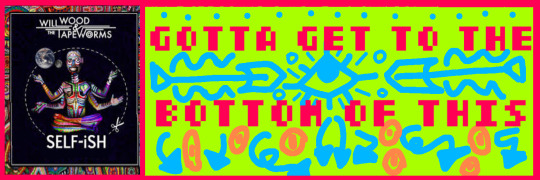







Will wood blinky is made by @skelpiescool
Deny defend depose blinky made by me :3 if you use mine please credit btw, not "credit to the artist" that's not credit
69 notes
·
View notes
Text





F2U Raptor base!
I've been working on my ref bases lately to prepare myself for ArtFight. I'll be reworking and adding quite a few bases in the following two months due to that, so maybe keep an eye on my story or the Google doc 👀
Anyways, here is my raptor squad with their updated designs showing off the new base! We have Kaijuru, Vulture, Creeper and Mystic on slide 2 to 5!
For everyone interested in the base, here are the rules:
1️⃣ Credit me. You don’t have to tag me, tho I would love to see what lovely designs you make with my bases 😀 2️⃣ My watermark has to stay on the artwork. You can move it around on the canvas, if you need the extra space, but it has to stay visible on it 3️⃣ You are allowed to use these bases for Ref Sheets, Adopts and Customs on these bases, but not for anything else 4️⃣ Any NSFW edits are forbidden! If I catch you making stuff like this, you get an immediate stay on my blacklist and will be blocked on all my social media accounts 5️⃣ Have fun creating designs!
You can find the base through these three platforms:
Toyhouse: https://toyhou.se/32745698.raptor-base-f2u
Google Docs: https://docs.google.com/document/d/1L5oHJ6XJkOgdJW7qtdf-L8-zG2ec_s4sVt5-8UJ1npc/edit?usp=sharing
DeviantArt: https://www.deviantart.com/stash/21a3cjarqojj
Or you can send me a DM or comment on this post if you want it send via Email or Discord :D
✅Likes, shares, saves and comments are highly appreciated ❌I own the copyright to these artworks! Any usage of it without my consent is prohibited. This includes the usage of my art in AI or NFTs. I don't consent to this. Art theft and tracing is prohibited as well!
#artwork#digital art#digital drawing#digital illustration#drawing#ibispaintx#art#artists on tumblr#raptor#dinosaur#dinosaur art#paleoart#free art#free base#free lineart#ftu base#ftu with credit#f2u with credit#f2u resources#f2u base#f2u
13 notes
·
View notes
Text
Naomi Alderman’s ‘The Future’
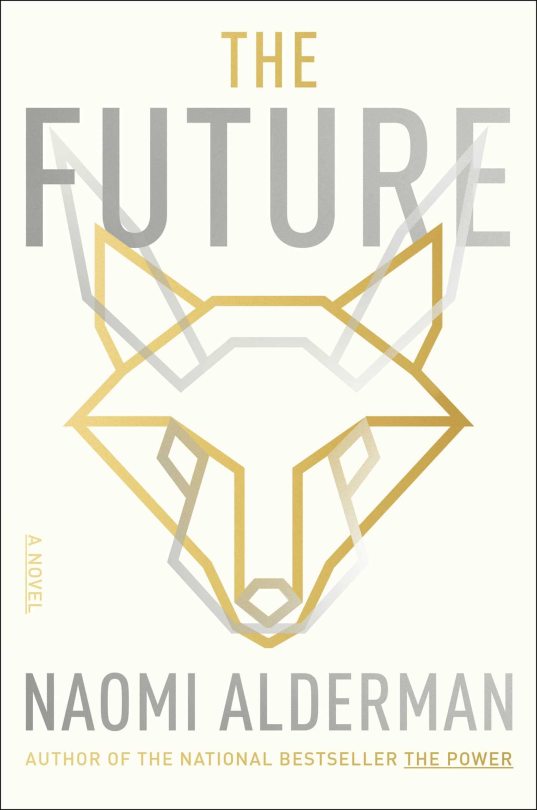
Naomi Alderman burst onto the scene in 2016 with The Power, an explosive and brilliant feminist apocalyptic parable. Now, seven years later, she's back with a chunky, propulsive second novel about a very different sort of apocalypse: The Future:
https://www.simonandschuster.com/books/The-Future/Naomi-Alderman/9781668025680
The Power was a thriller about a mysterious force that gives women the power to administer violent electric shocks – even lethal ones – from the palms of their hands. As this power races around the world, the status quo is abruptly shattered. Abusers get nasty surprises. The Saudi government topples. Parents of teenaged boys demand sex-segregated classes to protect their sons from vicious girls:
https://memex.craphound.com/2017/10/10/naomi-aldermans-the-power-in-which-fierce-power-of-women-is-awoken/
In The Future, we get a very different kind of apocalypse: the imagined apocalypse of the prepper. At the core of prepperism is a fantasy: that the world will experience a cataclysm that requires the special skills and supplies of the prepper themselves. Water chemists who turn prepper fantasize about attacks on the water-supply – not because there's any special reason to expect one, but because if terrorists attack the water supply, then water chemists become civilization-rescuing heroes:
https://pluralistic.net/2020/03/22/preppers-are-larpers/#preppers-unprepared
(And of course, if the world ends in such a way that marauding bandits rove the wasteland, eating their former neighbors, then macho, AR-15-obsessed musketfuckers get to reinvent themselves as warlords who defend the sheeple from "bad guys.")
This is what makes billionaire prepper fantasies just so weird – for most of us, it's hard to imagine how the skills of a billionaire are the one thing we'll need to see us through a crisis. But for billionaires themselves, the necessity of billionaires in rebooting civilization is so self-evident as to be unquestionable.
What's more, billionaires are convinced – more than any of us – that the world is about to end. As Douglas @Rushkoff puts it, these guys want to earn enough money to outrun the consequences of how they're making all that money. This is #TheMindset, the idea that your own position has jeopardized civilization itself, but that also, you must survive the cataclysm, because only you can survive it.
Rushkoff chronicles the real-world fantasies of luxury bunkers patrolled by mercenaries locked into explosive discipline collars in his book Survival of the Richest:
https://pluralistic.net/2022/09/13/collapse-porn/#collapse-porn
But billionaires don't just suck at running civilization, they also suck at making up stories about its collapse. One thing that's striking about Rushkoff's ethnography of rich people preparing to outlive the end of the human race is how banal their eschatological fantasies are.
It's not that there aren't any exciting stories to tell about billionaire survival fantasies. The granddaddy of these is, of course, Edgar Allan Poe's 1842 "#MasqueOfTheRedDeath":
https://www.poemuseum.org/the-masque-of-the-red-death
I published an updated version with the same title in 2019 in my novella collection #Radicalized:
https://pluralistic.net/2020/03/14/masque-of-the-red-death/#masque
In The Future, we get a cracking, multi-point-of-view adventure novel about billionaires prepping for the end of the world. Three billionaires, the lords of thinly veiled analogs to Facebook, Google and Amazon, each getting ready in their own way. Stumbling into their midst comes Lai Zhen, a prepper influencer vlogger with millions of followers.
When Zhen becomes romantically entangled with Martha Einkorn, the top aide and chief-of-prepping for one of these billionaires, she finds herself in possession of an AI chatbot that is devoted to protecting a very small number of people from incipient danger. This chatbot determines that Zhen is being stalked by an assassin at a mall in Singapore, and guides her to safety.
The chatbot is a closely held secret among the tech billionaire cabal. It is designed to monitor world events and predict when The Event is imminent, be it disease, war, or other cataclysmic disaster. With the chatbot's predictive powers and its superhuman guidance, the billionaires, their families, and their closest confidantes will be able to slip away before the shit hits the fan, fly by different private jets to one or another luxury bunker, and wait out the apocalypse. Once the fires raging without have died down to embers, the chatbot's billionaire charges will emerge to assume their places as wise and all-powerful leaders of the next human civilization.
As you might imagine, not everyone who finds out about this plan – including various members of the billionaires' families who are fully aware of these rich, powerful people's fallibility – is enthusiastic about it. As we build toward a looming crisis, we cycle between these family members, Zhen and her hacker buddies, and members of an online prepper community where Einkorn is a kind of provocateuse and eminence grise.
Alderman skillfully maneuvers all these power players and blocs into position before detonating the crisis that sets off the book's second act, where we get into some damned fine Masque of the Red Death territory, but clad in Tony Stark mecha survival suits and against a backdrop of total disaster.
I won't give away any spoilers here, except to say that there are lots of twists (that won't surprise readers of The Power, which had its own excellent surprises). But without delving too deeply into the fake-outs, crosses, and turns that Alderman lays, I will say that this is a fantastic and incredibly satisfying comeuppance novel that gets very deep into the ideology of wishing the world would end, and dreaming that when it does, you will finally matter.

If you'd like an essay-formatted version of this post to read or share, here's a link to it on pluralistic.net, my surveillance-free, ad-free, tracker-free blog:
https://pluralistic.net/2023/11/07/preppers-of-the-red-death/#the-event
#pluralistic#naomi alderman#the future#books#science fiction#apocalypse#billionaires#abolish billionaires#big tech#maneki neko#preppers#gift guide
87 notes
·
View notes
Text
Mastering Google Ads: Unlocking Advanced Targeting in Performance Max for Success
In an effort to improve the effectiveness and accuracy of campaign management, Google Ads has added new advanced targeting options for Performance Max campaigns. Advertisers can use a single campaign to target consumers across all Google channels, including Search, YouTube, Display, Gmail, and more, with Performance Max, an AI-powered campaign type. Every Business should know these features by knowing more by First DigiAdd The Best Digital Marketing Company
Highlights:
1. More Control with Advanced Targeting and Exclusion Tools.
2. Improved Reporting for Better Performance Insights.
3. Focus on Transparency, Actionable Data, and High-Value Customer Targeting.
Here's an overview of what the new targeted updates could include:
1. Audience Signals:
Improved Audience Segmentation: Google's AI can now better identify individuals who are more likely to convert by using audience information from advertisers. Customer information, demographics, interests, or even previous experiences with your company may serve as the basis for these signals.
Custom Audiences: More sophisticated customization choices enable you to target audiences according to more precise intents or behaviors, increasing the relevance of the advertisements that users see.
2. Contextual Targeting:
Users can now be targeted by Performance Max campaigns according to the context of their browsing activities. Ads might be displayed, for example, according to the content of the websites, movies, and applications that users are now using.
More dynamic ad distribution is made possible by this enhancement, which guarantees that advertisements are displayed in the appropriate environment and may increase conversions.
3. Improved Control with New Tools:
Exclusion Lists: In order to avoid targeting specific demographics or websites that might not be appropriate for their goods or services, advertisers can now build exclusion lists.
Updates to Geo-Targeting: By enabling advertisers to target certain cities or geographic areas, enhanced location targeting raises the campaign's local appeal and relevancy.
4. Enhanced Automation with Data-Driven Insights:
additional automation will give advertisers additional data-driven insights into the effectiveness of their efforts. With more precise control, Google Ads will employ machine learning to automatically modify bids, placements, and targeting tactics in response to performance data.
5. Cross-Channel Integration:
You can now prepare for even more powerful cross-channel targeting with Performance Max, which enables you to connect with potential clients across Google's wide range of platforms, such as Gmail, YouTube, and Search. To help advertisers better understand how people interact with ads on various platforms, Google Ads has boosted its capacity to optimize campaigns based on cross-channel behaviors.
6. Ad Asset Optimization:
In order to guarantee that advertisements are customised for certain formats, the latest revisions further enhance the optimisation of creative materials across several platforms. For improved engagement, Google Ads will automatically modify the assets, whether it's a text-based ad or a graphic creative for YouTube.
Advantages of Google Ads Introduces Advanced Targeting for Performance Max Campaigns:
1. Improved Audience Targeting:
Google uses improved AI-driven audience indications to find the most lucrative clients.
Increases the accuracy of targeting by using first-party data (customer lists, website visits).
Uses intent signals in real time to connect with people who are actively searching for similar goods or services.
2. Greater Control Over Campaign Performance:
Targeting parameters can be adjusted by advertisers according to corporate objectives
Better exclusions of irrelevant audiences are made possible by new restrictions, which lowers the amount of wasted advertising money.
Better brand safety features guarantee that advertisements show up in the right places.
3. Higher Conversion Rates:
Better conversion rates result from Google's AI-optimizing campaigns based on real-time signals.
For various user segments, dynamic asset optimization chooses the most effective ad creatives.
4. Enhanced Reporting & Insights:
Gives advertisers comprehensive audience information to better understand consumer behavior.
The most valuable audience segments are displayed in the latest performance breakdowns.
5. Cross-Channel Optimization:
Several Google platforms are already used by PMax campaigns (Search, Display, YouTube, Gmail, etc.).
For optimal efficiency, advanced targeting guarantees more intelligent budget distribution across channels.
6. Better Return on Ad Spend (ROAS):
Ad waste and cost-per-conversion are immediately decreased by more precise targeting. Spending money on clicks from users who are unlikely to convert is avoided when your advertising is displayed to the people who are most likely to be interested in your product or service. Your money will be spent more effectively thanks to this precision targeting, which will result in a cheaper cost for each conversion (sell, lead, or sign-up, for example). Reaching a larger percentage of eligible prospects increases the return on your advertising budget by reducing the amount of money wasted on irrelevant traffic.
Ad waste and cost-per-conversion are immediately decreased by more precise targeting. Spending money on clicks from users who are unlikely to convert is avoided when your advertising are displayed to the people who are most likely to be interested in your product or service. Your money will be spent more effectively thanks to this precision targeting, which will result in a cheaper cost for each conversion (sell, lead, or sign-up, for example). Reaching a larger percentage of eligible prospects increases the return on your advertising budget by reducing the amount of money wasted on irrelevant traffic.
Conclusion
Advertisers will have more control thanks to these sophisticated targeting options for Performance Max campaigns, which nevertheless rely on Google's AI-powered automation to boost results. Through improved segmentation and additional data and insights into user behaviour, the enhancements are intended to boost ad campaign efficacy and assist marketers in increasing conversions throughout the Google ecosystem. If you want to get more details about the Google Ad’s performance max campaign, contact Best Digital Marketing Company. If you're managing Google Ads, it might be a good time to explore these new features and adjust your strategies accordingly to leverage the full potential of Performance Max.
#digital marketing services#seo services#digital marketing company in india#best social media marketing agency#best social media marketing company in pune#best digital marketing company in pune#best digital marketing company#social media marketing services#digital marketing agency in pune#seo services company
2 notes
·
View notes
Text
🚀 Meta's New Ad Tools for Facebook & Instagram Are Here! 🎯

Meta just released exciting updates to its ad platforms, aimed at making your campaigns smarter and more effective. Here's a quick look at what’s new and why it matters:
1️⃣ Smarter Targeting with AI: Meta's AI-powered optimization helps you polish your ad targeting. Whether you're customizing ads for different audiences or adjusting campaigns, these tools are designed to reach the right people more efficiently.
2️⃣ New Incremental Attribution Model: This new attribution setting targets those who are more likely to convert after seeing your ad—customers who wouldn’t have taken action otherwise. Early tests show an average 20% increase in incremental conversions, ensuring your ads have a real impact.
3️⃣ Better Analytics Integration: Meta is simplifying connections with external analytics tools like Google Analytics and Adobe, providing a clearer view of how your campaigns perform across platforms. Now, you can track and understand the full customer journey, from paid social to SEO, all in one place.
✨ Key Features :
- Conversion Value Rules: Prioritize high-value customers without creating separate campaigns. Adjust your bids for different customer actions based on long-term value, so you can place higher bids on customers who offer more value over time—all within the same campaign.
- Incremental Attribution: Focus on “incremental conversions”—customers who wouldn’t have converted without seeing your ad. Early adopters have seen a 20% rise in these valuable conversions.
- Cross-Platform Analytics: Meta’s direct connections with analytics platforms allow you to merge data from different channels, giving you a holistic view of your ad performance. Early tests show a 30% increase in conversions when third-party analytics tools like Google Analytics are used alongside Meta ads.
These updates are about improving the precision and efficiency of your ad campaigns. Meta’s new AI-driven features help you achieve better results, make smarter decisions, and maximize the value of your ad spend.
💡 What to Do Now :
✔️ Review your current Meta ad strategy to ensure you're ready to take advantage of these tools.
✔️ Map out your customer journey to identify where these new features can add the most value.
✔️ Be prepared to test these updates as they roll out—early adopters are already seeing impressive gains.
How do you plan to use these new Meta tools? Share your thoughts in the comments below! 💬
📌Follow us on Social Media📌
📢 LinkedIn — Vedang Kadia — Amazon Associate | LinkedIn
📢 Quora — Vedang Kadia
📢 Tumblr — Untitled
📢 Medium — Vedang Kadia — Medium
#digital marketing#social media marketing#facebook ads#instagram ads#adtech#facebook meta#artificial intelligence#data analytics#google analytics#seo services#tumbler#search engine optimization#marketing strategy#tech news#openai#india#chatgpt
4 notes
·
View notes
Text
The Future of Jobs in IT: Which Skills You Should Learn.
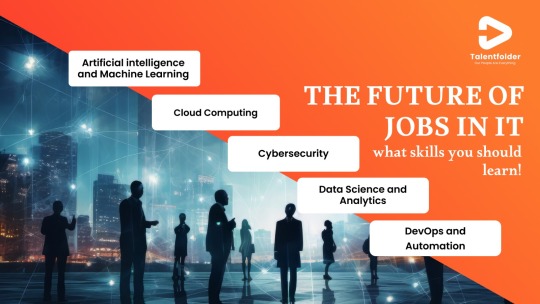
With changes in the industries due to technological changes, the demand for IT professionals will be in a constant evolution mode. New technologies such as automation, artificial intelligence, and cloud computing are increasingly being integrated into core business operations, which will soon make jobs in IT not just about coding but about mastering new technologies and developing versatile skills. Here, we cover what is waiting to take over the IT landscape and how you can prepare for this future.
1. Artificial Intelligence (AI) and Machine Learning (ML):
AI and ML are the things that are currently revolutionizing industries by making machines learn from data, automate processes, and predict outcomes. Thus, jobs for the future will be very much centered around these fields of AI and ML, and the professionals can expect to get work as AI engineers, data scientists, and automation specialists.
2. Cloud Computing:
With all operations now moving online, architects, developers, and security experts are in high demand for cloud work. It is very important to have skills on platforms such as AWS, Microsoft Azure, and Google Cloud for those who wish to work on cloud infrastructure and services.
3. Cybersecurity:
As dependence on digital mediums continues to increase, so must cybersecurity measures. Cybersecurity, ethical hacking, and network security would be skills everyone must use to protect data and systems from all the continuous threats.
4. Data Science and Analytics:
As they say, the new oil in this era is data. Therefore, organisations require professionals who would be able to analyze humongous datasets and infer actionable insights. Data science, data engineering, as well as advanced analytics tools, will be your cornucopia for thriving industries in the near future.
5. DevOps and Automation:
DevOps engineers are the ones who ensure that continuous integration and deployment work as smoothly and automatically as possible. Your knowledge of the business/operations will orient you well on that terrain, depending on how that applies to your needs.
Conclusion
IT job prospects rely heavily on AI, cloud computing, cybersecurity, and automation. It means that IT professionals must constantly innovate and update their skills to stay in competition. Whether an expert with years of experience or a newcomer, focusing on the following in-demand skills will gather success in this diverse land of IT evolution.
You might also like: How to crack interview in MNC IT
2 notes
·
View notes
Text
Technology Integration Education Research A New Era
Technology Integration Education Research era has revolutionized the manner college students examine and teachers coach. From interactive digital gear and virtual classrooms to artificial intelligence (AI) and information-driven insights, generation is reshaping schooling on a global scale. This transformation is going beyond replacing conventional chalkboards with smartboards or textbooks with capsules. It offers a extra dynamic, personalized, and efficient studying experience that prepares college students for the demands of the twenty first-century workforce. As we discover the profound effect of technology integration in education, we're going to have a look at its advantages, challenges, and the approaches it's far shaping the future of mastering.
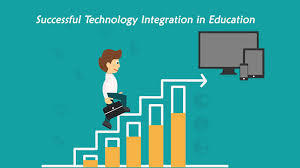
The Evolution of Technology in Education
Historically, education has been characterized by using traditional techniques of practice, which include lectures, textbooks, and hands-on activities. While these stay treasured, the appearance of era has brought a wealth of recent tools and assets that enhance the coaching and learning manner.
Technology in education began with the introduction of computers and the internet in classrooms, but it has on account that advanced into an atmosphere that includes smart gadgets, academic software program, on-line gaining knowledge of systems, and virtual studying environments. Schools and universities now contain era in multiple ways, from mixed getting to know models to fully on-line courses. This evolution allows for extra interactive, bendy, and reachable schooling for inexperienced persons of all ages.
The Benefits of Technology Integration in Education
Personalized Learning:
One of the most huge benefits of generation in schooling is its capability to facilitate customized gaining knowledge of reviews. With the assist of AI and system gaining knowledge of algorithms, educational platforms can tailor classes, quizzes, and exercises to individual college students’ learning speeds and patterns. This guarantees that each scholar gets guidance at their own tempo, minimizing frustration and maximizing comprehension.
Tools like adaptive getting to know software program analyze a scholar's progress and offer focused content that addresses their particular wishes. For instance, a pupil suffering with math can obtain extra practice troubles, at the same time as a greater advanced scholar is probably challenged with higher-degree questions.
Enhanced Engagement:
Interactive tools including instructional games, simulations, and multimedia content material make studying greater attractive and fun for students. Visual and audio elements help explain complicated concepts in approaches that conventional strategies won't, making studying extra reachable to visual and auditory inexperienced persons.
Virtual Reality (VR) and Augmented Reality (AR) are also more and more being utilized in lecture rooms to create immersive studying studies. Students can discover historical civilizations, visit outer area, or dissect virtual animals, all with out leaving the study room. These gear captivate students’ interest and make gaining knowledge of more memorable.
Collaboration and Communication:
Technology enables collaboration amongst students, instructors, and even worldwide friends. Tools like Google Classroom, Microsoft Teams, and Zoom allow for real-time communique, document sharing, and collaborative tasks. Students can paintings collectively on assignments, talk thoughts, and supply peer feedback, regardless of their physical area.
In addition to pupil collaboration, era permits instructors to hold higher communication with students and mother and father. Online portals and apps offer instant updates on grades, assignments, and attendance, allowing for more obvious and ongoing feedback.
Accessibility and Inclusivity:
It has the capacity to make schooling more inclusive via offering get admission to to resources for students with disabilities. For example, display readers and textual content-to-speech software help visually impaired college students, whilst speech recognition equipment help students with bodily or getting to know disabilities take part extra completely in elegance.
Online guides and digital textbooks additionally allow students from remote or underserved areas to get entry to high-quality education. With the rise of Massive Open Online Courses (MOOCs), novices from around the arena can take publications from top universities without ever stepping foot on campus.
Global Learning Opportunities:
It breaks down geographical limitations, allowing college students to connect to friends, teachers, and experts from around the sector. Through digital exchanges, college students can engage in cross-cultural projects, discussions, and studies. This international angle complements students’ expertise of various cultures and fosters empathy, crucial thinking, and worldwide citizenship.
Moreover, online structures like Coursera, and Khan Academy offer college students get admission to to world-elegance schooling from pinnacle universities and establishments, regularly at little to no cost.
Data-Driven Insights:
Importance technology integration education affords educators with powerful equipment to collect and examine records on scholar performance. Learning control systems (LMS) and evaluation equipment generate unique reviews on student development, figuring out regions of electricity and people requiring in addition attention. This facts allows instructors to make knowledgeable decisions, adjust coaching techniques, and provide centered interventions to help student getting to know.
Predictive analytics also can help become aware of students who are vulnerable to falling behind, allowing instructors to interfere early and offer the vital help to preserve them on the right track.
2 notes
·
View notes
Text
How to Crack Digital Marketing job
Introduction
Digital marketing is the best career opportunity. You recently completed your graduation and are starting your career in digital marketing. First, understand what digital marketing is. What is your current role and how do you navigate the job. Here I guide you to help you to crack a digital marketing job You find the jobs easily on LinkedIn.
Digital Marketing Overview
Digital Marketing promotes products and services through digital methods, for example, SEO, social media marketing, content writing, ads, email marketing, etc. It is important to know the marketing strategies.
Important Skills
Knowledge skill: gaining practical knowledge in SEO (search engine optimization), writing blogs, and content marketing. WordPress, SMM (social media marketing), Google Ads, etc.
Creative skill - you must have knowledge of creative skills in graphic design for example Canva, photoshop, and Abode like.
Tools - must have knowledge of AI tools for example ChatGPT and other tools.
Social media profile
Profile. It is important to have a social media profile and be active on it, for example, on LinkedIn, Instagram, Facebook, Twitter, etc.…
Stay updated
Stay Updated on new marketing trends tools and creative learning.

Keys areas knowledge and skills which require maximum focus"
SEO (search engine optimization) is the process of optimizing a website or webpage to increase the quality and quantity of its traffic from a search engine organic result.
SMM (Social Media Marketing) is the process of making a network and sharing information about the companies. it is also a digital marketing and e-marketing
Content Writing is the process of writing content example blogs and others.
Email Marketing is the process of direct digital marketing sending emails to other people regarding brands and services.
Video marketing is the process of digital marketing advertising method to promote any brands or services digitally method
For digital marketing success, it is important to do marketing research and identify your brand strategies.
crack digital marketing job
For jobs, you must have good communication skills. and marketing knowledge. and practical experience in all digital marketing strategies.
learn how to use AI tools and other tools example Google Analytics and many more tools
first, you complete your course and internship program and gain knowledge and experience. and more learning on social media platforms. join digital marketing groups on LinkedIn.
For job interview
Before you apply for a job, you must have a good-quality resume. and after you prepare for the interview
for the interview be ready for sample digital marketing questions
for example,
what is digital marketing? and how it is work
what is SEO?
what do you mean by advertising? and how it is help?
what is PPC?
Focus on the main points
cracking a digital marketing job. You must have a combination of knowledge and skill. For example, Creative skills, technical skills, practical knowledge, and experience. Gaining knowledge in marketing, being active on social media, joining a digital marketing group, and search jobs on LinkedIn.
you must have the best learning skills.
you have skills and knowledge. you crack a job easily
to do best practices
strengthen your creativity
focus on your goal
don't give up
good communication
Networking
Make a strong network with other people on social media Example for LinkedIn. You find jobs on LinkedIn anytime and crack the interview.
to crack the job always keep the latest updates and remain active on social media platforms.
And use your internship experience for cracking the job
Conclusion
you must your main focus is on marketing strategies, brand building, learning skills communicating yourself and stay updated latest trend
If you are serious about my article, DM me for more details.
2 notes
·
View notes
Text
Progress Update #3
The production phase of my capstone project is now underway. I emailed Sharla the design and template of what one Instagram post would look like and I was given approval! However, I had to make a couple of changes to my project. I initially was going to use four ChatGPT models and Canva Magic Media, but I felt that it was too excessive and would overwhelm my viewers with so many choices. So, I decided to use three ChatGPT models instead, as well as drop Canva Magic Media.

I would first like to mention that by doing this project, I am, by no means, claiming that I am a "color expert." Color perception is subjective, and this project is an exploration of the different color perceptions of people and technology. I will first create my color palette before generating in AI because I don't my color decisions to be influenced or swayed by the results that AI generates. I will use a variety of image search engines such as Google Images and Unsplash to seek inspiration and create a mood board.
After I create my color palette, I will generate color palettes from the seven AI models that I am using: ColorMagic, Color Palette Designer (ChatGPT), Color Palette & Design (ChatGPT), Color Palette Generator (ChatGPT), Adobe Firefly, & Midjourney. Adobe Firefly & Midjourney are particularly different from the rest of the AI model because they spew out images rather than a color palette, so I use Adobe Color to extract colors from the images and create a color palette.



After I create all 8 color palettes, I will gather them together and post them on my Instagram stories, asking two questions: Which color palette best represents the word prompt, and which color palette was human made. It is a blind poll, meaning that there are no labels indicating who or what model made the color palette.
In the next two weeks, I will start working on each word prompt and preparing posts to upload to my Instagram page.
2 notes
·
View notes
Text
How To Get An Online Internship In the IT Sector (Skills And Tips)

Internships provide invaluable opportunities to gain practical skills, build professional networks, and get your foot in the door with top tech companies.
With remote tech internships exploding in IT, online internships are now more accessible than ever. Whether a college student or career changer seeking hands-on IT experience, virtual internships allow you to work from anywhere.
However, competition can be fierce, and simply applying is often insufficient. Follow this comprehensive guide to develop the right technical abilities.
After reading this, you can effectively showcase your potential, and maximize your chances of securing a remote tech internship.
Understand In-Demand IT Skills
The first step is gaining a solid grasp of the most in-demand technical and soft skills. While specific requirements vary by company and role, these competencies form a strong foundation:
Technical Skills:
Proficiency in programming languages like Python, JavaScript, Java, and C++
Experience with front-end frameworks like React, Angular, and Vue.js
Back-end development skills - APIs, microservices, SQL databases Cloud platforms such as AWS, Azure, Google Cloud
IT infrastructure skills - servers, networks, security
Data science abilities like SQL, R, Python
Web development and design
Mobile app development - Android, iOS, hybrid
Soft Skills:
Communication and collaboration
Analytical thinking and problem-solving
Leadership and teamwork
Creativity and innovation
Fast learning ability
Detail and deadline-oriented
Flexibility and adaptability
Obtain Relevant Credentials
While hands-on skills hold more weight, relevant academic credentials and professional IT certifications can strengthen your profile. Consider pursuing:
Bachelor’s degree in Computer Science, IT, or related engineering fields
Internship-specific courses teaching technical and soft skills
Certificates like CompTIA, AWS, Cisco, Microsoft, Google, etc.
Accredited boot camp programs focusing on applied skills
MOOCs to build expertise in trending technologies like AI/ML, cybersecurity
Open source contributions on GitHub to demonstrate coding skills
The right credentials display a work ethic and supplement practical abilities gained through projects.
Build An Impressive Project Portfolio
Nothing showcases skills better than real-world examples of your work. Develop a portfolio of strong coding, design, and analytical projects related to your target internship field.
Mobile apps - publish on app stores or use GitHub project pages
Websites - deploy online via hosting services
Data science - showcase Jupyter notebooks, visualizations
Open source code - contribute to public projects on GitHub
Technical writing - blog posts explaining key concepts
Automation and scripts - record demo videos
Choose projects demonstrating both breadth and depth. Align them to skills required for your desired internship roles.
Master Technical Interview Skills
IT internship interviews often include challenging technical questions and assessments. Be prepared to:
Explain your code and projects clearly. Review them beforehand.
Discuss concepts related to key technologies on your resume. Ramp up on fundamentals.
Solve coding challenges focused on algorithms, data structures, etc. Practice online judges like LeetCode.
Address system design and analytical problems. Read case interview guides.
Show communication and collaboration skills through pair programming tests.
Ask smart, well-researched questions about the company’s tech stack, projects, etc.
Schedule dedicated time for technical interview practice daily. Learn to think aloud while coding and get feedback from peers.
Show Passion and Curiosity
Beyond raw skills, demonstrating genuine passion and curiosity for technology goes a long way.
Take online courses and certifications beyond the college curriculum
Build side projects and engage in hackathons for self-learning
Stay updated on industry news, trends, and innovations
Be active on forums like StackOverflow to exchange knowledge
Attend tech events and conferences
Participate in groups like coding clubs and prior internship programs
Follow tech leaders on social mediaListen to tech podcasts while commuting
Show interest in the company’s mission, products, and culture
This passion shines through in interviews and applications, distinguishing you from other candidates.
Promote Your Personal Brand
In the digital age, your online presence and personal brand are make-or-break. Craft a strong brand image across:
LinkedIn profile - showcase achievements, skills, recommendations
GitHub - displays coding activity and quality through clean repositories
Portfolio website - highlight projects and share valuable content
Social media - post career updates and useful insights, but avoid oversharing
Blogs/videos - demonstrate communication abilities and thought leadership
Online communities - actively engage and build relationships
Ensure your profiles are professional and consistent. Let your technical abilities and potential speak for themselves.
Optimize Your Internship Applications
Applying isn’t enough. You must optimize your internship applications to get a reply:
Ensure you apply to openings that strongly match your profile Customize your resume and cover letters using keywords in the job description
Speak to skills gained from coursework, online learning, and personal projects
Quantify achievements rather than just listing responsibilities
Emphasize passion for technology and fast learning abilities
Ask insightful questions that show business understanding
Follow up respectfully if you don’t hear back in 1-2 weeks
Show interest in full-time conversion early and often
Apply early since competitive openings close quickly
Leverage referrals from your network if possible
This is how you do apply meaningfully. If you want a good internship, focus on the quality of applications. The hard work will pay off.
Succeed in Your Remote Internship
The hard work pays off when you secure that long-awaited internship! Continue standing out through the actual internship by:
Over Communicating in remote settings - proactively collaborate
Asking smart questions and owning your learning
Finding mentors and building connections remotely
Absorbing constructive criticism with maturity
Shipping quality work on or before deadlines
Clarifying expectations frequently
Going above and beyond prescribed responsibilities sometimes
Getting regular feedback and asking for more work
Leaving with letters of recommendation and job referrals
When you follow these tips, you are sure to succeed in your remote internship. Remember, soft skills can get you long ahead in the company, sometimes core skills can’t.
Conclusion
With careful preparation, tenacity, and a passion for technology, you will be able to get internships jobs in USA that suit your needs in the thriving IT sector.
Use this guide to build the right skills, create an impressive personal brand, ace the applications, and excel in your internship.
Additionally, you can browse some good job portals. For instance, GrandSiren can help you get remote tech internships. The portal has the best internship jobs in India and USA you’ll find. The investment will pay dividends throughout your career in this digital age. Wishing you the best of luck! Let me know in the comments about your internship hunt journey.
#itjobs#internship opportunities#internships#interns#entryleveljobs#gradsiren#opportunities#jobsearch#careeropportunities#jobseekers#ineffable interns#jobs#employment#career
4 notes
·
View notes
Text
Hi, so this concerns the future of this blog/Tumblr account!
"Discouraging AI crawlers" is just as good as saying you still allow AI crawlers to gather content from Tumblr. AI crawlers still gather data without asking for consent. So who are these "partners?" Who is Automattic cooperating with?
Strange. Searching for 'Tumblr AI partnership' doesn't yield an exact name, but we can already see that Open AI and Midjourney are supposedly the big players mentioned, from an insider in this 404 Media article. It's probably not true, but let's assume this is, for the sake of my point.
Open AI's datasets - the content used to 'train' the software - are basically just everything available on the web. Straight up, they admit to using information available on the internet, information they get from third parties, and information from their trainers. They've been around since 2015. In which case they've never asked for consent anyway and have likely long collected this. Like, really? Was anyone prepared to jump regulation on this technology as fast as it came up?
Midjourney's datasets are vague, but they've been around since at least 2022. Baby little thing! But there are interviews with the founder David Holz, and... oh, dear. You haven't been seeking consent? Until recently? When Tumblr's been around for 17 years? And we've only just recently had this toggle implemented! Dang.
Anyways, I have the respective toggles turned on. This 'change' is utterly useless because of how invasive the Google C4, LAION, and whatever the hell Common Crawl is. I share my art across multiple platforms already so whether I like it or not, my words and my art are used somewhere. Those Stable Diffusion cronies got deviantArt too so my old stuff is probably getting repeatedly deformed in some fashion, despite my account being inactive and never giving consent in the first place.
So what does it mean for this blog? It's staying. I'll keep posting art. These greedy scrooges have been scraping data forever and are incentivizing people to pay for regurgitated images or whatever it is they're calling it. They've already done the damage and this won't solve anything.
🖕
This update sucks very much. Sincerely, 🖕🖕🖕🖕🖕🖕🖕
Hi, Tumblr. It’s Tumblr. We’re working on some things that we want to share with you.
AI companies are acquiring content across the internet for a variety of purposes in all sorts of ways. There are currently very few regulations giving individuals control over how their content is used by AI platforms. Proposed regulations around the world, like the European Union’s AI Act, would give individuals more control over whether and how their content is utilized by this emerging technology. We support this right regardless of geographic location, so we’re releasing a toggle to opt out of sharing content from your public blogs with third parties, including AI platforms that use this content for model training. We’re also working with partners to ensure you have as much control as possible regarding what content is used.
Here are the important details:
We already discourage AI crawlers from gathering content from Tumblr and will continue to do so, save for those with which we partner.
We want to represent all of you on Tumblr and ensure that protections are in place for how your content is used. We are committed to making sure our partners respect those decisions.
To opt out of sharing your public blogs’ content with third parties, visit each of your public blogs’ blog settings via the web interface and toggle on the “Prevent third-party sharing” option.
For instructions on how to opt out using the latest version of the app, please visit this Help Center doc.
Please note: If you’ve already chosen to discourage search crawling of your blog in your settings, we’ve automatically enabled the “Prevent third-party sharing” option.
If you have concerns, please read through the Help Center doc linked above and contact us via Support if you still have questions.
95K notes
·
View notes
Text
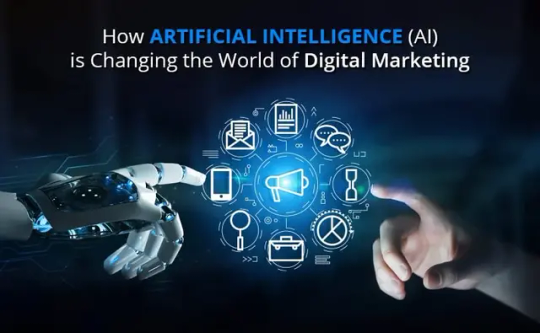
How AI Will Transform Digital Marketing in 2026: Trends, Tools & Opportunities
In the fast-paced world of digital marketing, Artificial Intelligence (AI) has evolved from a futuristic concept into an everyday necessity. As we look ahead to 2026, AI is not just enhancing campaigns—it’s redefining the very foundation of digital strategies. Businesses, marketers, and aspiring professionals must stay ahead of the curve to remain relevant.
If you're looking to stay competitive or kickstart your career in this rapidly evolving field, enrolling in the Best Digital Marketing Course in Jaipur can help you gain cutting-edge skills tailored for the AI-driven landscape.
Why AI Is a Game-Changer in Digital Marketing
Artificial Intelligence in digital marketing is no longer optional—it’s essential. From personalized content to predictive analytics, AI is powering more intelligent and more efficient campaigns. Here's how AI is reshaping the digital marketing industry:
1. Hyper-Personalized Customer Experiences
AI uses data from user behavior, preferences, and interactions to deliver tailored content in real-time. Whether it’s personalized email marketing or dynamic landing pages, this kind of micro-targeting leads to higher engagement and conversion rates.
2. Smarter SEO with AI Algorithms
Google's search algorithm updates continue to lean heavily on machine learning. AI tools now help marketers analyze SERP trends, automate keyword research, and even generate SEO-friendly content. Understanding these tools is critical, which is why the Best Digital Marketing Course in Jaipur includes hands-on training in AI-driven SEO strategies.
3. Predictive Analytics and Data-Driven Decisions
AI can sift through massive amounts of data to predict consumer behavior. This helps marketers identify trends, anticipate customer needs, and optimize campaigns before they even go live.
4. AI Chatbots and Conversational Marketing
Chatbots powered by Natural Language Processing (NLP) are now sophisticated enough to handle complex customer queries 24/7. In 2026, these bots will be even more human-like, playing a key role in lead generation and customer support.
5. Automated Content Creation
AI-powered tools like GPT-based models are already generating product descriptions, ad copy, social media posts, and even video scripts. This speeds up content production and allows teams to focus on creative strategy.
Trends to Watch in 2026
Looking ahead, here are the AI trends that will dominate digital marketing in 2026:
Voice Search Optimization: With smart speakers and mobile assistants becoming mainstream, voice search is expected to account for over 50% of all searches.
Visual & Video Recognition: AI will assist in optimizing visual content based on user interaction and emotional response analysis.
AI-Driven Influencer Marketing: Advanced tools will be used to match brands with influencers based on predictive performance, not just follower count.
How to Prepare: Learn AI in Marketing the Right Way
AI in marketing isn't just for techies. Anyone can master these tools with the right training.
If you're serious about building a future-proof marketing career, consider enrolling in the Best Digital Marketing Course in Jaipur. A well-designed course will help you learn:
AI tools like ChatGPT, Jasper, and SEMrush AI Assist
Data analytics and visualization
Automated ad campaign tools
Customer behavior prediction techniques
You'll also gain access to real-world projects and case studies focused on how AI is used by top brands.
Final Thoughts
As we move into 2026, AI isn’t just an addition to your digital marketing toolkit—it’s the core engine driving success. Marketers who embrace AI will unlock faster, smarter, and more personalized ways to connect with their audience.
So whether you're a business owner, a marketing professional, or a student, now is the time to adapt. And if you're looking for a place to start, the Best Digital Marketing Course in Jaipur is your gateway to mastering AI-powered marketing and staying ahead of the curve.
If you want more information about this visit- https://techcareer.in
#digital marketing course#best digital marketing classes in jaipur#digital marketing course in jaipur#digital marketing classes#best digital marketing classes
0 notes
Text
HOW TO TRANSITION FROM SEO TO GEO WITHOUT LOSING SEARCH RANKINGS AND TRAFFIC

Transitioning from Search Engine Optimization (SEO) to Generative Engine Optimization (GEO) is essential in adapting to the evolving landscape of AI-driven search platforms. This shift ensures that your content remains visible and relevant without compromising existing search rankings and traffic. By integrating GEO strategies with traditional SEO practices, businesses can maintain and even enhance their online presence.
UNDERSTANDING THE SHIFT: SEO VS. GEO
SEO focuses on optimizing content to rank higher on traditional search engines like Google and Bing. It involves strategies such as keyword optimization, backlink building, and technical enhancements to improve website visibility. In contrast, GEO aims to optimize content for AI-powered search engines and generative models that provide synthesized responses to user queries. This approach emphasizes creating content that AI algorithms can easily interpret and present in conversational contexts.
STEPS TO TRANSITION FROM SEO TO GEO WITHOUT LOSING RANKINGS AND TRAFFIC
Evaluate Current SEO Performance
Begin by assessing your existing SEO strategies to identify strengths and areas for improvement. This evaluation provides a foundation for integrating GEO practices without disrupting successful SEO elements.
Understand AI Search Engine Dynamics
Familiarize yourself with how AI-driven search engines operate. Unlike traditional search engines that list links, AI search platforms generate direct answers. Optimizing for these platforms requires content that is structured and informative, enabling AI systems to extract and present information effectively.
Create High-Quality, Contextual Content
Develop content that addresses user queries comprehensively and contextually. Incorporate relevant data, statistics, and authoritative references to enhance credibility. This approach aligns with GEO’s emphasis on providing AI systems with rich information for generating accurate responses.
Implement Structured Data Markup
Utilize structured data (schema markup) to help AI algorithms understand the context and relevance of your content. This practice enhances the likelihood of your content being featured in AI-generated responses, bridging the gap between SEO and GEO.
Optimize for Conversational Queries
AI search engines often handle natural language and conversational queries. Tailor your content to answer these types of questions directly, using a tone and structure that aligns with conversational search patterns.
Monitor Performance Metrics
Track key performance indicators (KPIs) such as organic traffic, engagement rates, and rankings on both traditional and AI-driven platforms. Regular monitoring allows you to adjust strategies promptly to maintain and improve visibility.
Stay Updated with Industry Trends
The digital marketing landscape is continually evolving. Keep abreast of the latest developments in both SEO and GEO to adapt your strategies effectively and maintain a competitive edge.
INTEGRATING SEO AND GEO: A BALANCED APPROACH
Combining SEO and GEO strategies ensures a comprehensive optimization approach. While SEO enhances visibility on traditional search engines, GEO prepares your content for prominence in AI-generated responses. This integration allows businesses to cater to a broader range of search platforms and user behaviours.
By thoughtfully transitioning from SEO to GEO and integrating both strategies, businesses can maintain their search rankings and traffic while positioning themselves effectively in the AI-driven search environment.
FREQUENTLY ASKED QUESTIONS
1. What is Generative Engine Optimization (GEO), and how does it differ from traditional SEO?
GEO focuses on optimizing content for AI-driven platforms like ChatGPT and Bard, which generate direct answers instead of linking to websites—unlike traditional SEO that prioritizes search engine rankings and backlinks.
2. Why is transitioning from SEO to GEO important in the current digital landscape?
With AI-powered search engines gaining popularity, adapting to GEO helps your content remain visible and discoverable across newer, AI-based channels, expanding your reach without compromising existing SEO efforts.
3. Will my current organic traffic drop when shifting to GEO-focused strategies? No, not if the transition is handled correctly. GEO can complement SEO by improving your content’s structure, authority, and clarity, which benefits both search rankings and AI-generated visibility.
4. Do I need to target different keywords for GEO optimization? Yes, incorporate long-tail and question-based keywords. Generative engines prioritize user intent and semantic context, so adapting your keyword strategy ensures better alignment with AI queries.
6. Is structured data important for both SEO and GEO? Absolutely. Structured data helps both traditional and generative engines understand your content. It increases your chances of being selected for AI summaries, rich snippets, or featured answers.
7. How long does it take to see benefits from GEO? Results can vary, but you may notice AI-generated mentions or increased brand awareness within a few weeks if your content is authoritative, accurate, and structured for AI discovery.
#digital marketing#google ad expert#google advertising#google adwords#seo#seo agency#local seo#google ad agency#google ads#seo company#best local seo services#best local seo agency#ai seo services in ahmedabad#ai seo services agency in ahmedabad#ai seo company india#ai seo india#ai seo consultant reviews#ai seo agency india#ai seo services consultation#rankgeo ai seo#ai seo specialist india#ai seo service#ai seo optimization with geo services#geo ai seo experts#ai seo consultants#ai seo company#best geo agency#geo replacing seo#top geo agency#geo optimization
0 notes